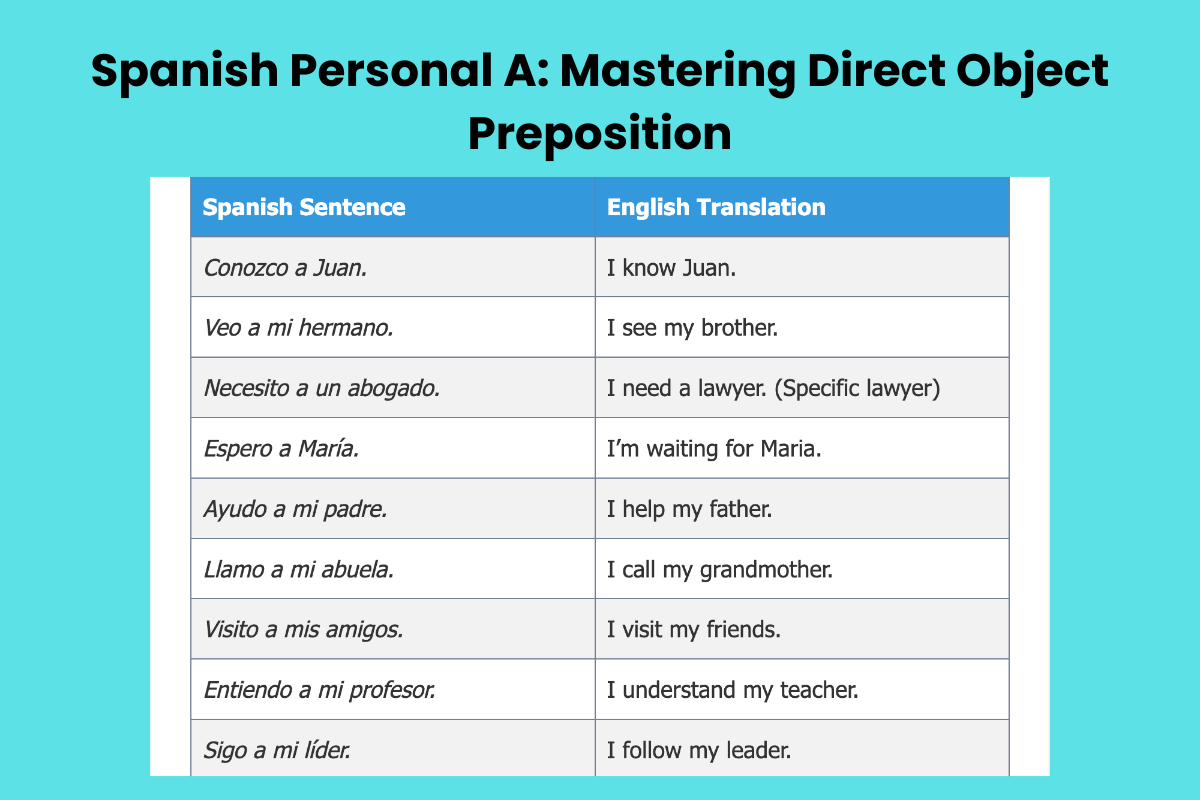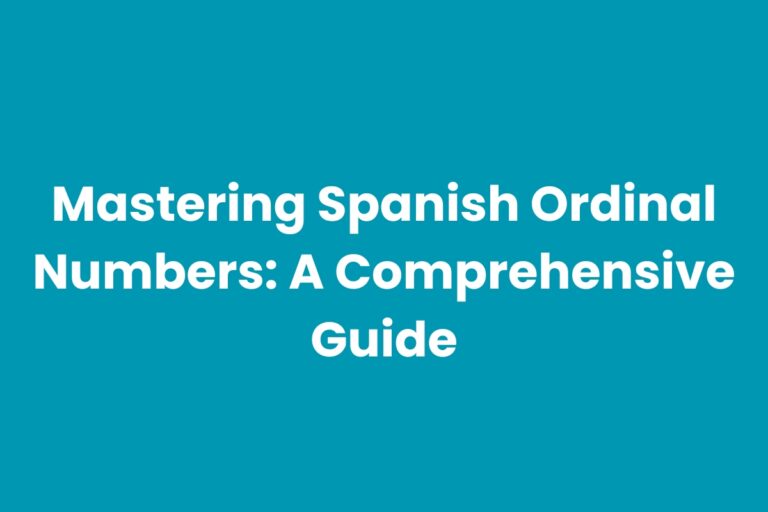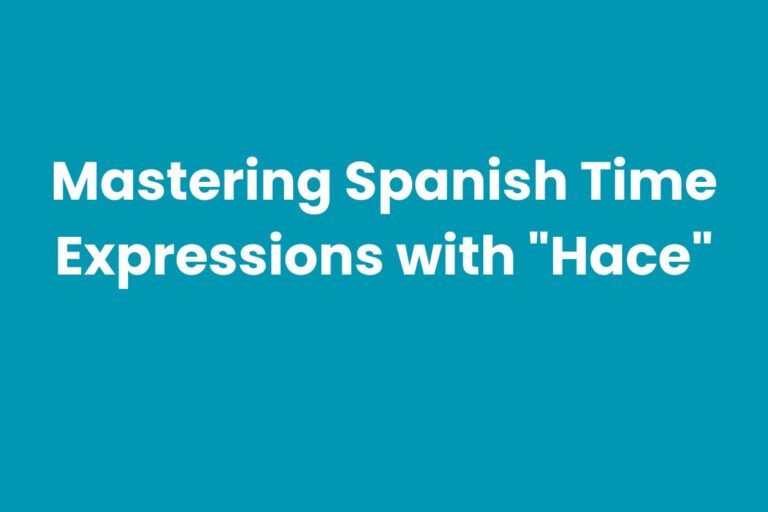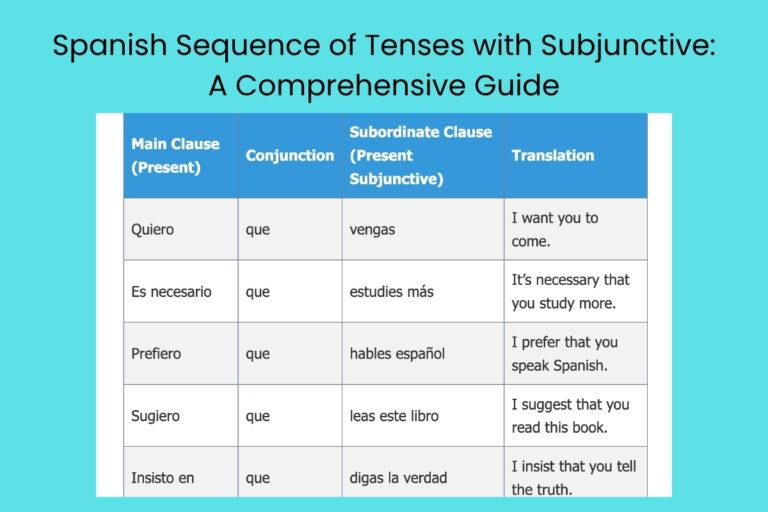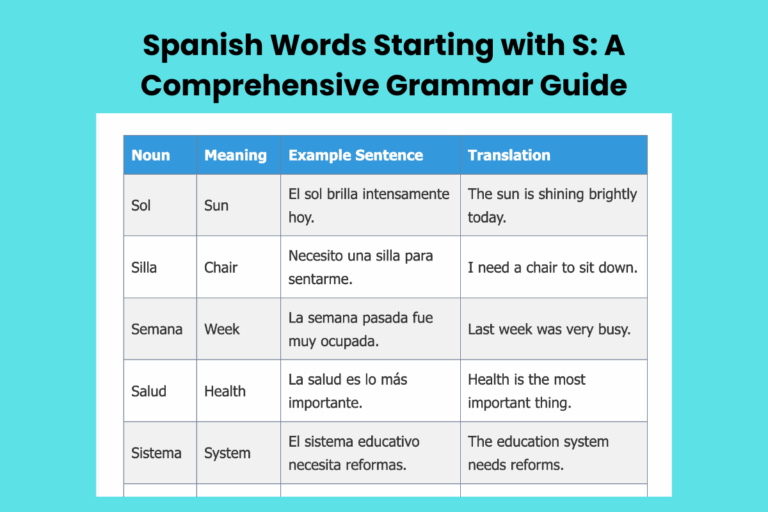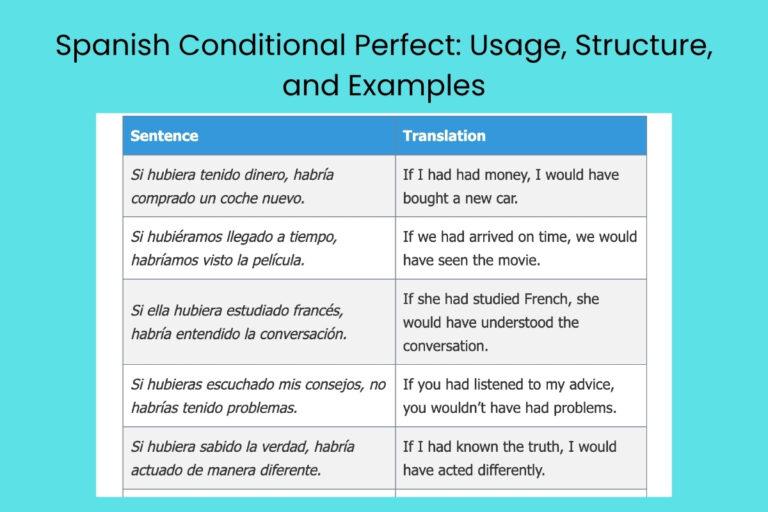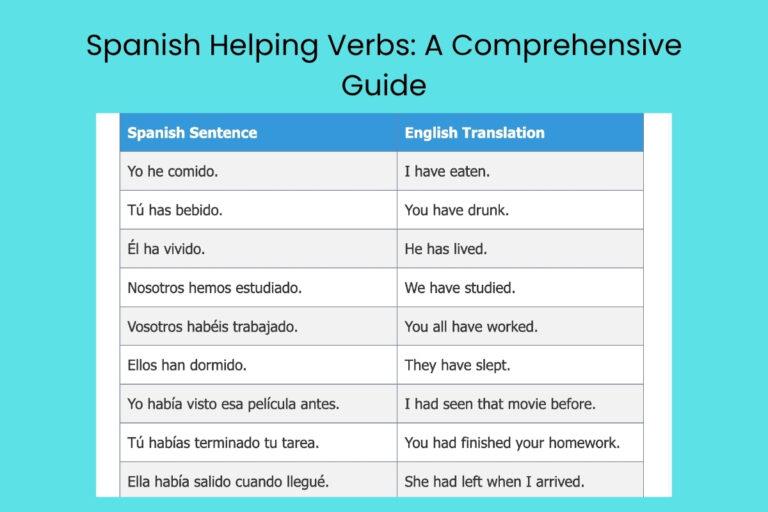Spanish Personal A: Mastering Direct Object Preposition
The Spanish “personal a” is a grammatical concept that often confuses learners. This preposition, used before direct object nouns referring to specific people or pets, doesn’t have a direct equivalent in English. Understanding its usage is crucial for constructing grammatically correct and natural-sounding Spanish sentences. This article provides a comprehensive guide to the personal a, covering its definition, rules, common mistakes, and offering plenty of examples and practice exercises. Whether you’re a beginner or an advanced student, mastering the personal a will significantly improve your fluency and accuracy in Spanish.
Table of Contents
- Introduction
- Definition of the Personal A
- Structural Breakdown
- Types and Categories
- Examples of the Personal A
- Usage Rules for the Personal A
- Common Mistakes with the Personal A
- Practice Exercises
- Advanced Topics
- FAQ
- Conclusion
Definition of the Personal A
The “personal a” in Spanish is a preposition that precedes a direct object when that direct object is a specific person or a pet. It has no direct translation into English, which is why it often presents a challenge for English speakers learning Spanish. Its primary function is to clarify the relationship between the verb and the direct object, indicating that the object is a person or a pet specifically being acted upon. It’s important to note that the personal a is not used with inanimate objects or general references to people.
The personal a serves to distinguish between “who” and “what” the verb is acting upon. Without the personal a, a sentence might be grammatically correct but could lack clarity or sound unnatural. The presence of the personal a signals that the direct object is animate and deserving of this grammatical marker.
Consider the following examples to illustrate the difference:
- Veo la casa. (I see the house.) – No personal a because “la casa” is an inanimate object.
- Veo a Juan. (I see Juan.) – Personal a because “Juan” is a person.
Structural Breakdown
The structure in which the personal a appears is fairly straightforward. It is positioned directly before the noun or pronoun that represents the specific person or pet being acted upon. The general sentence structure is: Subject + Verb + a + Direct Object (Person/Pet).
Let’s break down this structure with more examples:
- Subject: Yo (I)
- Verb: Conozco (know)
- a: a
- Direct Object (Person): María (Maria)
- Complete Sentence: Yo conozco a María. (I know Maria.)
When using pronouns as direct objects, the structure remains the same, but the pronoun replaces the person’s name:
- Subject: Él (He)
- Verb: Llama (calls)
- a: a
- Direct Object (Pronoun): ella (her)
- Complete Sentence: Él la llama a ella. (He calls her.) Technically, the ‘a ella’ is redundant, you would simply say ‘Él la llama.’ However, it can be used for emphasis.
Contractions also occur. If the personal a is followed by the definite article “el,” it contracts to “al”:
- Veo al chico. (I see the boy.) (a + el = al)
Types and Categories
The personal a doesn’t have distinct “types” in the same way that verbs or nouns might. However, it’s essential to understand the different contexts in which it is used and the nuances that affect its application. We can categorize its usage based on the nature of the direct object.
Specific Persons
This is the most common use of the personal a. It is used when the direct object is a specific, identifiable person. This includes people known by name, relationship, or description.
Examples:
- Visito a mi madre. (I visit my mother.)
- Necesito a un médico. (I need a doctor.) – In this case, the ‘a’ is used because the speaker needs a *specific* doctor.
- Vi a la profesora en la biblioteca. (I saw the professor in the library.)
Pets
The personal a is also used with pets, especially when they are considered part of the family and have a name. This usage reflects the close relationship people have with their pets.
Examples:
- Amo a mi perro. (I love my dog.)
- Llevo a mi gato al veterinario. (I take my cat to the veterinarian.)
Personified Objects (Rare)
In rare cases, the personal a can be used with inanimate objects that are personified, typically in literary or poetic contexts. This usage is less common and serves to give the object a human-like quality.
Example:
- El mar abrazó a la costa. (The sea embraced the coast.) – Here, the sea is personified.
With Pronouns
As mentioned earlier, the personal a is used when the direct object is a personal pronoun. This reinforces the person-specific nature of the action.
Examples:
- Te veo a ti. (I see you.) – The ‘a ti’ is redundant, but used for emphasis. “Te veo” is perfectly acceptable.
- Nosotros los ayudamos a ellos. (We help them.) Again, the ‘a ellos’ is redundant, but used for emphasis. “Nosotros los ayudamos” is perfectly acceptable.
Examples of the Personal A
To solidify your understanding, let’s look at a wide range of examples categorized by the type of direct object.
Examples with Specific People
The following table provides examples of sentences using the personal a with specific people as direct objects.
| Spanish Sentence | English Translation |
|---|---|
| Conozco a Juan. | I know Juan. |
| Veo a mi hermano. | I see my brother. |
| Necesito a un abogado. | I need a lawyer. (Specific lawyer) |
| Espero a María. | I’m waiting for Maria. |
| Ayudo a mi padre. | I help my father. |
| Llamo a mi abuela. | I call my grandmother. |
| Visito a mis amigos. | I visit my friends. |
| Entiendo a mi profesor. | I understand my teacher. |
| Sigo a mi líder. | I follow my leader. |
| Amo a mi esposa. | I love my wife. |
| Respeto a mis mayores. | I respect my elders. |
| Busco a mi hija. | I’m looking for my daughter. |
| Contrato a un empleado. | I hire an employee. |
| Despido al empleado. | I fire the employee. |
| Admiro a mi ídolo. | I admire my idol. |
| Saludé al rey. | I greeted the king. |
| Escucho a mi conciencia. | I listen to my conscience. |
| Aconsejo a mi vecino. | I advise my neighbor. |
| Critico a mi oponente. | I criticize my opponent. |
| Observo a los estudiantes. | I observe the students. |
| Invito a mis compañeros. | I invite my classmates. |
| Molesto a mi hermano pequeño. | I bother my little brother. |
| Protejo a mi familia. | I protect my family. |
Examples with Pets
The following table demonstrates the use of the personal a with pets.
| Spanish Sentence | English Translation |
|---|---|
| Amo a mi perro, Max. | I love my dog, Max. |
| Llevo a mi gato al veterinario. | I take my cat to the veterinarian. |
| Alimento a mi pez. | I feed my fish. |
| Paseo a mi perro por el parque. | I walk my dog in the park. |
| Acaricio a mi gato. | I pet my cat. |
| Entreno a mi caballo. | I train my horse. |
| Cuido a mi canario. | I take care of my canary. |
| Adoro a mi tortuga. | I adore my turtle. |
| Bañé a mi perro ayer. | I bathed my dog yesterday. |
| Encontré a mi gato en el jardín. | I found my cat in the garden. |
| A mi perro le gusta perseguir a las ardillas. | My dog likes to chase squirrels. |
| Mi hija alimenta a los pollitos. | My daughter feeds the chicks. |
| Veo a mi hámster correr en su rueda. | I watch my hamster run in his wheel. |
| Llevo a mi loro al hombro. | I carry my parrot on my shoulder. |
| Juego a menudo con mi conejo. | I often play with my rabbit. |
| Mi hermana cuida a mi cobaya. | My sister takes care of my guinea pig. |
| A mi abuela le gustan mucho los gatos, así que alimenta a los gatos callejeros. | My grandmother likes cats a lot, so she feeds the stray cats. |
| Sacamos a nuestro perro a pasear por la noche. | We take our dog for a walk at night. |
| ¿Has visto a mi pez dorado? | Have you seen my goldfish? |
| Mi vecina ama a sus pájaros y les canta todas las mañanas. | My neighbor loves her birds and sings to them every morning. |
Examples with Pronouns
This table illustrates the use of the personal a with pronouns as direct objects.
| Spanish Sentence | English Translation |
|---|---|
| Te veo a ti. | I see you. (Emphasis on “you”) |
| Lo conozco a él. | I know him. (Emphasis on “him”) |
| La amo a ella. | I love her. (Emphasis on “her”) |
| Los ayudamos a ellos. | We help them. (Emphasis on “them”) |
| Las respeto a ellas. | I respect them (feminine). (Emphasis on “them”) |
| Me necesitas a mí. | You need me. (Emphasis on “me”) |
| Nosotros te escuchamos a ti. | We listen to you. (Emphasis on “you”) |
| Él me sigue a mí. | He follows me. (Emphasis on “me”) |
| Ella te admira a ti. | She admires you. (Emphasis on “you”) |
| Ellos nos invitan a nosotros. | They invite us. (Emphasis on “us”) |
| ¿A quién ves? – Te veo a ti. | Who do you see? – I see you. (Emphasis on “you”) |
| A él le gusta ayudar a otros, especialmente a ella. | He likes to help others, especially her. |
| ¿A quién eligieron? – Nos eligieron a nosotros. | Who did they choose? – They chose us. |
| A mí me gusta ir al cine con ellos. | I like to go to the movies with them. |
| No te culpo a ti, culpo a la situación. | I don’t blame you, I blame the situation. |
| A veces no entiendo a mis padres. | Sometimes I don’t understand my parents. |
| Es importante respetar a todos, incluso a aquellos con quienes no estamos de acuerdo. | It’s important to respect everyone, even those with whom we disagree. |
| A la gente le gusta seguir a líderes fuertes. | People like to follow strong leaders. |
| Necesito a alguien que me entienda. | I need someone who understands me. |
| Amo a aquellos que me aman. | I love those who love me. |
Usage Rules for the Personal A
Understanding the rules governing the use of the personal a is crucial for avoiding errors and speaking Spanish correctly. Here are the key rules:
- Use with Specific People: The personal a is required when the direct object is a specific person.
- Use with Pets: Use the personal a with pets, especially those considered part of the family.
- Do Not Use with Inanimate Objects: The personal a is not used before inanimate objects.
- Do Not Use with General References: Avoid using the personal a when referring to people in general, unless specifying a particular group.
- Contraction with “el”: When the personal a is followed by the definite article “el,” it contracts to “al” (a + el = al).
- Redundancy for Emphasis: The use of *a + [pronoun]* is optional and adds emphasis.
Exceptions and Special Cases
Like many grammar rules, there are exceptions and special cases to consider:
- Tener (To Have): The verb tener (to have) generally does not require the personal a, even when the direct object is a person. However, in some regions or dialects, it might be used, especially when expressing strong affection or a close relationship.
- Buscar (To Look For): When buscar means “to look for” in the sense of searching for someone, the personal a is used. However, when it means “to look for” in the sense of seeking a quality or characteristic in someone, it is not used.
- Hay (There is/are): The impersonal verb hay (there is/are) does not use the personal a, even when referring to people.
Here are examples illustrating these exceptions:
| Spanish Sentence | English Translation | Explanation |
|---|---|---|
| Tengo un hermano. | I have a brother. | No personal a with tener. |
| Busco a mi amigo. | I am looking for my friend. | Personal a because you are searching for a specific person. |
| Busco un buen candidato. | I am looking for a good candidate. | No personal a because you are seeking a quality in a person. |
| Hay dos estudiantes en la clase. | There are two students in the class. | No personal a with hay. |
Common Mistakes with the Personal A
One of the most common mistakes is omitting the personal a when it is required or using it when it is not needed. Here are some examples of common errors and their corrections:
| Incorrect | Correct | Explanation |
|---|---|---|
| Veo María. | Veo a María. | Missing personal a before a specific person. |
| Amo la casa. | Amo la casa. | No personal a needed for inanimate objects. |
| Tengo a un amigo. | Tengo un amigo. | Generally, no personal a with tener. |
| Busco un amigo. | Busco a un amigo. | If you are looking for a *specific* friend, use the personal a. If you are looking for a friend in general, do not. |
| Ayudo personas. | Ayudo a las personas. | Missing personal a before a specific group of people. |
| Conozco el profesor. | Conozco al profesor. | Missing personal a and contraction with “el.” |
| Espero mi madre. | Espero a mi madre. | Missing personal a before a specific person. |
| Llamé mi abuela. | Llamé a mi abuela. | Missing personal a before a specific person. |
| Visitamos nuestros amigos. | Visitamos a nuestros amigos. | Missing personal a before a specific person. |
| Entiendo mi profesor. | Entiendo a mi profesor. | Missing personal a before a specific person. |
Practice Exercises
Test your understanding of the personal a with these practice exercises.
Exercise 1: Fill in the Blank
Fill in the blank with “a” or “Ø” (no personal a) where appropriate.
| Sentence | Answer |
|---|---|
| 1. Veo ____ María. | a |
| 2. Compro ____ un coche. | Ø |
| 3. Necesito ____ un médico. | a |
| 4. Tengo ____ un perro. | Ø |
| 5. Espero ____ mi amigo. | a |
| 6. Amo ____ mi gato. | a |
| 7. Visito ____ la ciudad. | Ø |
| 8. Escucho ____ la música. | Ø |
| 9. Sigo ____ mi líder. | a |
| 10. Contrato ____ un empleado. | a |
Exercise 2: Correct the Sentence
Correct the following sentences where the personal a is used incorrectly.
| Incorrect Sentence | Correct Sentence |
|---|---|
| 1. Veo la televisión a. | Veo la televisión. |
| 2. Tengo a un libro. | Tengo un libro. |
| 3. Espero a el autobús. | Espero el autobús. |
| 4. Amo a mi casa. | Amo mi casa. |
| 5. Necesito a dinero. | Necesito dinero. |
| 6. Busco a una oportunidad. | Busco una oportunidad. |
| 7. Él quiere a su coche. | Él quiere su coche. |
| 8. Ella admira a la estatua. | Ella admira la estatua. |
| 9. Ellos ven a la luna. | Ellos ven la luna. |
| 10. Nosotros compramos a la mesa. | Nosotros compramos la mesa. |
Exercise 3: Translate the Sentence
Translate the following sentences into Spanish, paying attention to the use of the personal a.
| English Sentence | Spanish Translation |
|---|---|
| 1. I see my mother. | Veo a mi madre. |
| 2. I have a car. | Tengo un coche. |
| 3. I need a doctor. | Necesito a un médico. |
| 4. I love my dog. | Amo a mi perro. |
| 5. I visit the city. | Visito la ciudad. |
| 6. I listen to music. | Escucho la música. |
| 7. I follow my leader. | Sigo a mi líder. |
| 8. I hire an employee. | Contrato a un empleado. |
| 9. I respect my elders. | Respeto a mis mayores. |
| 10. I am looking for my daughter. | Busco a mi hija. |
Advanced Topics
For advanced learners, understanding the nuances and subtle uses of the personal a can further refine their Spanish proficiency.
- Emphasis and Style: While often grammatically required, the personal a can also be used for stylistic emphasis, particularly with pronouns.
- Regional Variations: In some regions, the usage of the personal a might vary slightly, particularly with the verb tener.
- Literary Usage: In literature, the personal a can be used creatively to personify objects or create specific effects.
FAQ
- What is the personal a in Spanish?
The personal a is a preposition used before a direct object when that direct object is a specific person or pet. It has no direct English equivalent.
- When should I use the personal a?
Use the personal a when the direct object is a specific person or a pet. It clarifies that the verb is acting on a person or pet.
- When should I NOT use the personal a?
Do not use the personal a before inanimate objects, general references to people, or with the verb tener in its standard usage.
- What happens when the personal a is followed by “el”?
The personal a contracts with “el” to form “al.” Example: Veo al chico. (I see the boy.)
- Is the personal a always required?
In most cases, yes, when referring to a specific person or pet. However, there are exceptions, such as with the verb tener and in certain regional variations.
- Does the personal a have a direct translation in English?
No, the personal a does not have a direct translation in English, which is why it can be challenging for English speakers to learn.
- Can I use the personal a with inanimate objects?
Generally, no. However, in rare cases, inanimate objects can be personified in literary or poetic contexts, which might warrant the use of the personal a.
- What if I forget to use the personal a?
Forgetting the personal a can make your sentences sound unnatural or grammatically incorrect. While the meaning might still be understood, it’s important to use it correctly for fluency and accuracy.
- How can I practice using the personal a?
Practice by translating sentences, filling in the blanks, and correcting sentences where the personal a is used incorrectly. Exposure to native Spanish speakers and authentic materials can also help.
- Is the personal ‘a’ used with the verb ‘hay’?
No, the personal ‘a’ is not used with the impersonal verb ‘hay’ (there is/are), even when referring to people.
- Is it correct to say “Tengo a mi hermano” instead of “Tengo mi hermano”?
While “Tengo mi hermano” is the standard and generally accepted form, “Tengo a mi hermano” can be used in some regions or to express a particularly strong affection or close relationship. However, it’s less common.
Conclusion
Mastering the Spanish personal a is a significant step towards achieving fluency and accuracy in the language. By understanding its definition, rules, and exceptions, you can avoid common mistakes and construct grammatically correct and natural-sounding sentences. Remember to practice regularly, expose yourself to authentic Spanish content, and pay attention to how native speakers use the personal a. With consistent effort, you’ll confidently and correctly use this important grammatical element in your Spanish communication.

